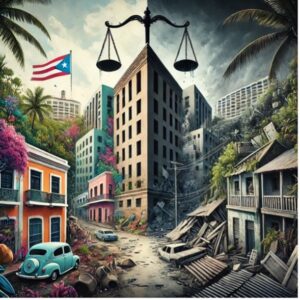
Benito Antonio Martínez Ocasio, better known by his stage name “Bad Bunny,” has redefined the use of music as a platform for activism.[i] Known worldwide for his popular songs and commitment to advocating for his homeland of Puerto Rico, Bad Bunny has continued to highlight Puerto Rico’s struggles in his latest album, DeBí TiRAR MÁS FOTos (“DTMF”). This album has caught the world by storm, not only due to its catchy lyrics but also due to its powerful underlying message.[ii] In DTMF, Bad Bunny warns of the socio-political risks Puerto Rican culture has faced, mainly focused on the impacts of the island’s tourism industry. Various songs on the album critique how tourism-driven policies have magnified gentrification, displaced locals, and commercialized Puerto Rican culture for the benefit of tourism. Through DTMF, Bad Bunny has captured the frustrations of Puerto Ricans and the realities of their challenges.
Notably, in the track “Turista,” Bad Bunny describes heartbreak while criticizing uniformed mass tourism.[iii] In a metaphoric narrative about a fleeting relationship, Bad Bunny compares a tourist to a lover who is temporary and unaware of the deeper cultural context of the island.[iv] The lyrics highlight how the tourism industry has prioritized the desires and needs of tourists at the expense of residents.[v] In this context, DTMF underlines the role of laws that have shaped Puerto Rico’s economy.
As a popular global vacation destination, Puerto Rico has several laws to facilitate tourism, such as Act 20, Act 22, and Act 74. These acts provide significant tax incentives to promote the relocation of individual investors. Specifically, Act 20 provides tax incentives for companies establishing and expanding their businesses in Puerto Rico.[vi] Act 22, known as the Act to Promote the Relocation of Individual Investors, offers non-residents 100% tax exemptions on all interest, dividends, and long-term capital gains.[vii] Similarly, Act 74, known as the Tourism Development Act, is intended to attract tourism projects on the island, including hotels, resorts, and other short-term rentals. To do so, the Act provides tax incentive packages to offer hotel developers a competitive advantage over other travel destinations.[viii] These laws remain in effect, now unified under Act 60, which combines several of these acts. While these acts seek to stimulate economic development, they have also driven up property values and rent prices across various parts of the island.
This economic shift has led to the displacement of residents in historically popular tourist areas such as Rincón and Old San Juan.[ix] Bad Bunny’s accompanying short film for DTMF illustrates this reality in detail, portraying the impact of gentrification and tourism on the local communities. The short film focuses on a once-vibrant local community modernized and overtaken by tourist-driven businesses. The film captures how locals have not only been priced out of their homes but also how their culture has been commercialized and diminished in favor of catering to tourists.[x] By combining his music with this visual narrative, Bad Bunny effectively captures the costs of tourism-focused policies and development.
Another track, “Lo Que Le Pasó a Hawaii,” further critiques the commodification of Puerto Rican culture, a phenomenon common in the tourism industry. Commodification in tourism refers to the process of transforming local cultures and natural landscapes into products and services for tourist consumption. In this track, Bad Bunny draws a parallel between Puerto Rico and Hawaii. The lyrics demonstrate how both islands have been marketed as tropical paradises while the culture of their local communities has been eroded.[xi] These lyrics reflect how the rise in tourism has transformed the islands into commodities, prioritizing the profit of the tourism industry over people. The song’s imagery summons a sense of loss, portraying communities and families that have been overshadowed by the interests of tourism.[xii] Underscoring the need for stronger legal frameworks to protect culture, traditions, and the land itself.
Ultimately, DTMF goes beyond the boundaries of music, serving as a powerful call to action for both legal and political communities to address the socio-political issues Puerto Ricans face. The themes throughout the album address the damaging effects of tourism while highlighting the need for a stronger legal framework that balances economic interests with the preservation of local culture and communities. Bad Bunny reminds us that Puerto Rico is not simply a beautiful travel destination but the home to a vibrant culture with a rich history. Through DTMF, he urges listeners to think critically about the impact of tourism-driven policies and advocate for a future that protects the island and its people. In doing so, DTMF becomes not just a catchy tune but a catalyst for legal and social change in Puerto Rico.
[i] See Marisa Losciale, Bad Bunny Explains How He Landed on the Stage Name, Parade (Sept. 16, 2024), https://parade.com/news/bad-bunny-real-name-how-he-got-stage-name-origin-carpool-karaoke-2023.
[ii] See Isabella Visbal, Music Spotlight:“DeBÍ TiRAR Más FOTos” by Bad Bunny, Univ. Press (Jan. 11, 2025), https://www.upressonline.com/2025/01/music-spotlight-debi-tirar-mas-fotos-by-bad-bunny/.
[iii] See Sara Delgado, Bad Bunny’s DtMf: The Meaning Behind His Most Political Lyrics About Puerto Rico, Teen Vogue (Jan. 17, 2025), https://www.teenvogue.com/story/bad-bunny-debi-tirar-mas-fotos-political-lines-explained.
[iv] See Alice Herman, Bad Bunny Teams Up With Jorell Meléndez-Badillo to Unpack Puerto Rican History, Tone Madison (Jan. 13, 2025), https://tonemadison.com/articles/bad-bunny-teams-up-with-jorell-melendez-badillo-to-unpack-puerto-rican-history/.
[v] See Anamaria Artemisa Sayre Et Al., Unpacking Bad Bunny’s Personal and Political ‘DeBÍ TiRAR MáS FOToS’, npr (Jan. 10, 2025, 10:32 AM), https://www.npr.org/2025/01/10/nx-s1-5250287/bad-bunny-debi-tirar-mas-fotos-political-puerto-rico.
[vi] See Manuel Zambrana, Puerto Rico’s Act 20 and Act 22-Key Tax Benefits, Dla Piper (Aug. 3, 2016), https://www.dlapiper.com/es-pr/insights/publications/2016/08/puerto-ricos-act-20-and-act-22.
[vii] See Act 22- Puerto Rico Tax Incentives to Business Owners and Investors, Torres CPA Grp., https://torrescpa.com/pr-tax-incentives/act-22 (last visited Jan. 22, 2025).
[viii] See Puerto Rico Offers a Variety of Tax Incentives for Different Industries, Perdomo Ferrer LLC, https://www.pf-cpa.com/tax_incentives.html (last visited Jan. 22, 2025).
[ix] See Hugo Marín González, Rincón, Puerto Rico: Between Gentrification and Colonialism, Latino Rebels (Sept. 25, 2020), https://www.latinorebels.com/2020/09/25/rincongentrification/.
[x] See Jaeqwon Suarez, How Bad Bunny’s Short Film Explores Puerto Rico’s Gentrification, Trill Mag (Jan. 16, 2025), https://www.trillmag.com/entertainment/music/how-bad-bunnys-short-film-explores-puerto-ricos-gentrification/.
[xi] See Maria Sherman, Music Review: Bad Bunny’s ‘Debí Tirar Más Fotos’ is a Love Letter to Puerto Rico, AP News (Jan. 5, 2025, 1:27 PM), https://apnews.com/article/bad-bunny-debi-tirar-mas-fotos-review-856f8e4f89e48e6ab104a491ae3dbcde.
[xii] See Alberto Palao, The Powerful Meaning Behind the Silences in Bad Bunny’s ‘Lo Que Le Pasó a Hawaii’, Los 40 (Jan. 7, 2025, 5:23 PM), https://los40.us/2025/the-powerful-meaning-behind-the-silences-in-bad-bunnys-lo-que-le-paso-a-hawaii-28201.html.



